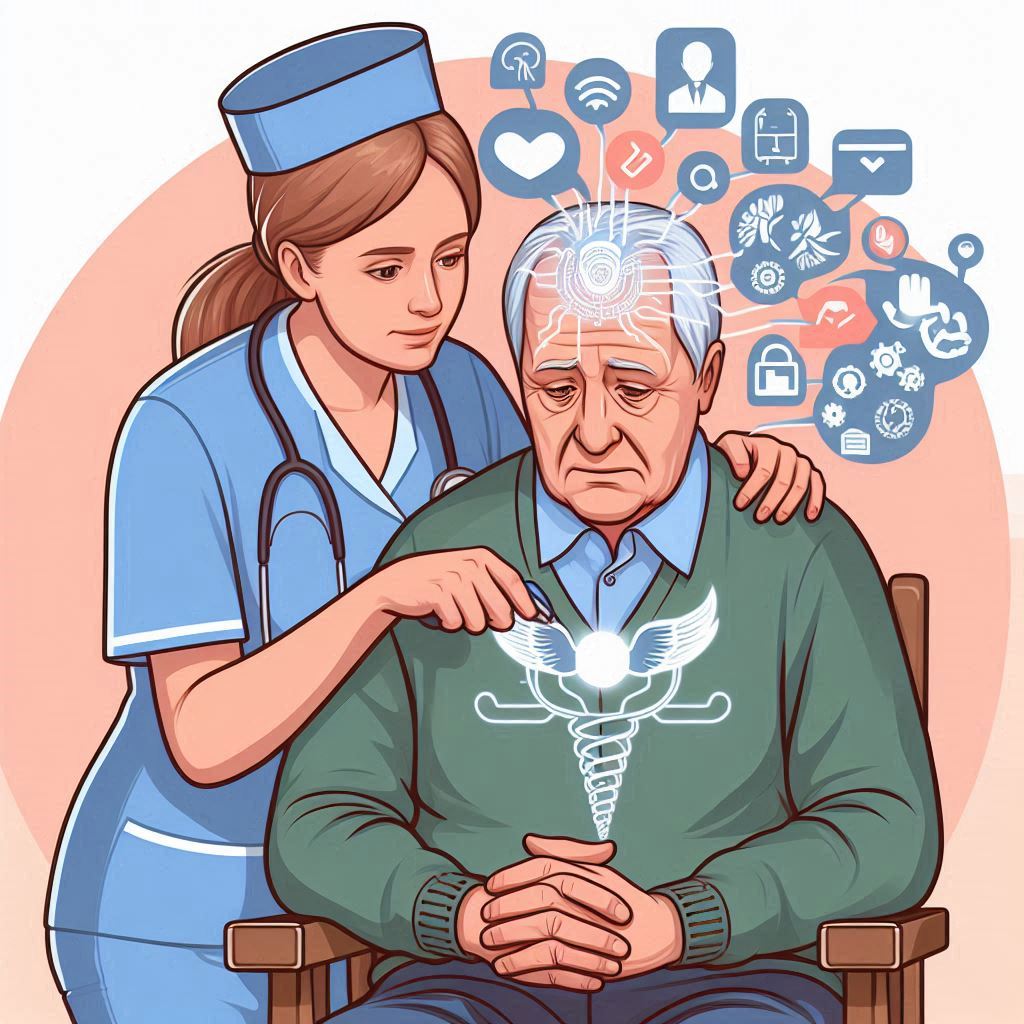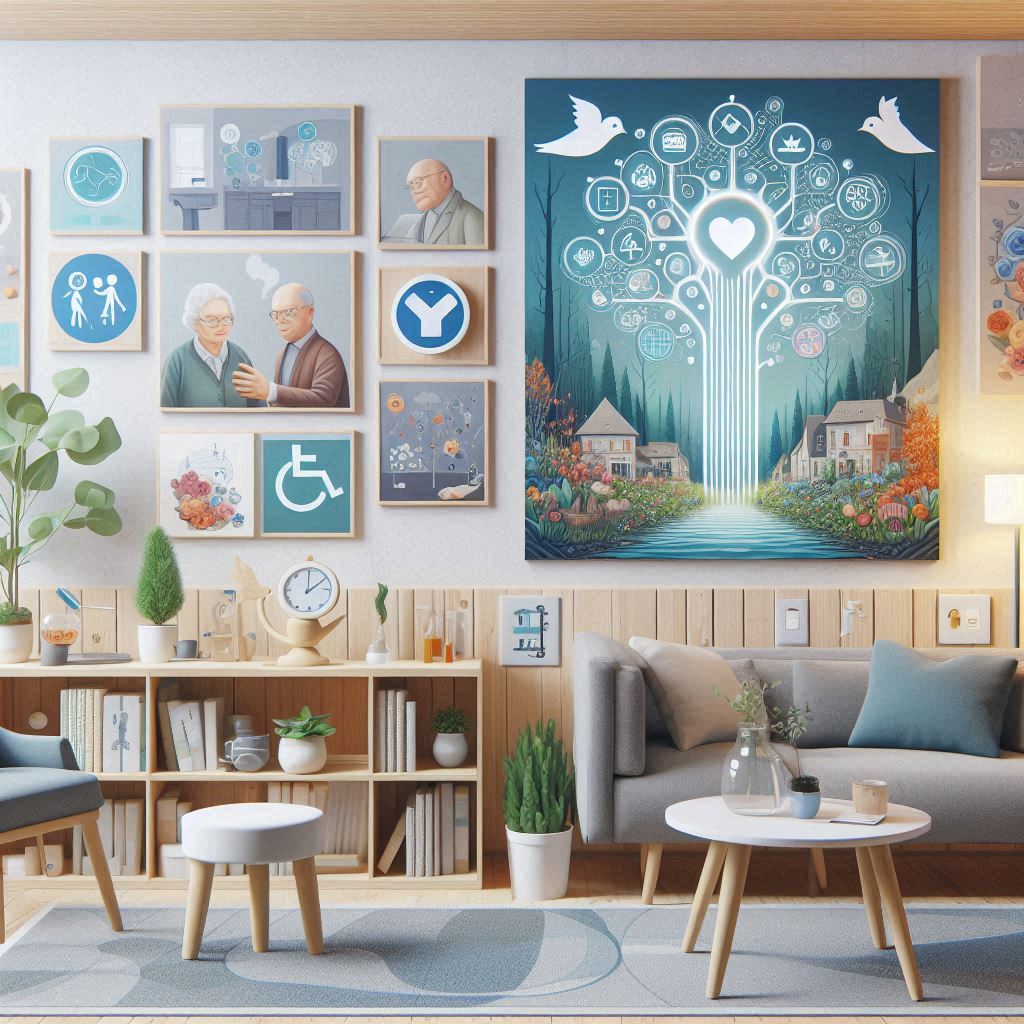
Anna Bratulic dementia: A Story of Compassion, Art, and Hope
Anna Bratulic sat quietly at the foot of her father Ervin Nagy’s bed, watching him disappear into a cloud of memories. He had been fighting dementia for years, and it seemed like every day presented new challenges. The once-energetic man she knew was slipping into the perplexing world of dementia. Still, she refused to give up on him. Anna realized she needed to find ways to make his life more comfortable and meaningful. Along the way, she discovered tools like free printable activities for dementia patients, signage for dementia, and the importance of art therapy to help elderly patients cope.
The Early Stages: Adjusting to Ervin’s Dementia

When Ervin Nagy was first diagnosed with dementia, Anna didn’t realize how much it would change their lives. The early signs were subtle: he began forgetting small details, repeating himself, and getting lost in familiar places.
After receiving the official diagnosis, she started researching ways to help. This led her to explore art activities for elderly with dementia, which allowed her father to express himself even as his words failed him. Whether it was through coloring or painting, Ervin seemed to find peace in these moments of creativity.
Anna also learned about free printable activities for dementia patients—simple puzzles, memory games, and coloring sheets that Ervin could work on. These activities kept his mind engaged while giving him a sense of accomplishment. Even on difficult days, these small exercises were a lifeline for both of them.
Understanding the 7 Stages of Lewy Body Dementia Hallucinations
As Ervin’s condition worsened, Anna began to notice more disturbing symptoms, particularly the vivid hallucinations that accompany the 7 stages of Lewy body dementia hallucinations. There were days when he saw things that were not there or became terrified of imaginary figures. Anna attempted to console him, holding his hand and talking him through the episodes, but it was difficult.
That is when she discovered Dementia Live, a program that allows caregivers like herself to understand what dementia patients go through on a daily basis. This allowed her to better understand her father’s world and how to deal with his hallucinations with patience and empathy.

Navigating Guardianship: An Important Decision
As Ervin’s dementia progressed, Anna realized he was no longer able to make important decisions about his care. She began looking into how to obtain guardianship for a parent with dementia, knowing that it was the only way to ensure his safety and well-being. It was a difficult process, but she completed the required paperwork, presented medical evidence, and obtained the legal authority to make decisions on his behalf. It was both a relief and a heavy burden, but Anna understood that it was necessary.

Creating a Dementia-Friendly Environment with Signage and Art
One of the most beneficial changes Anna made was to incorporate dementia signage throughout their home. One of the most valuable changes Anna made was incorporating signage for dementia around their home. Simple labels with bold fonts and bright colors enabled her father to navigate the house more independently, particularly when he became disoriented. She labeled the bathroom, kitchen, and living room, giving him a sense of security.

Art therapy remained an important component of their routine. Ervin was able to express himself through various art activities for elderly with dementia, even if it was only through colors and brushstrokes. For a man who had lost his ability to communicate, art became his voice.
Emotional and Spiritual Support: Saint Dymphna, the Patron Saint of Dementia | Anna Bratulic Dementia
In her search for emotional and spiritual support, Anna came across Saint Dymphna, the patron saint of dementia. She found comfort in praying to Saint Dymphna for guidance and strength while caring for her father. She felt at ease knowing that many caregivers had followed in her footsteps.
The importance of communication: 7 things not to say to someone with dementia
Caring for someone with dementia has also taught Anna the value of communication. Through trial and error, she learned seven things not to say to someone suffering from dementia:

7 things not to say to someone with dementia
- “Don’t you remember?”
- “You already told me that.”
- “You’re wrong.”
- “What did you do today?”
- “Why are you upset?”
- “You’re not trying hard enough.”
- “Calm down.”
Instead, Anna relied on reassuring words and gestures. When Ervin became confused or frustrated, she never corrected him harshly. Instead, she gently guided him and assured him that he was safe.
Conclusion: A journey of love and compassion.
Anna Bratulic’s story exemplifies the emotional, physical, and spiritual challenges of caring for a loved one with dementia. Anna was able to give her father, Ervin Nagy, the dignity and comfort he deserved by using tools such as free printable dementia activities, dementia signage, and art therapy. Anna transformed her difficult dementia journey into one of compassion, love, and hope through patience, understanding, and support from programs such as Dementia Live.
FAQs
What are the 7 stages of Lewy body dementia hallucinations?
The 7 stages range from mild confusion and forgetfulness to severe cognitive decline with vivid hallucinations and paranoia.
How do I get guardianship of a parent with dementia?
You need to file for guardianship through the court system, providing medical documentation that shows your parent’s inability to make decisions.
What are some free printable activities for dementia patients?
These include memory games, word searches, coloring sheets, and simple puzzles that can engage dementia patients and keep their minds active.
How does signage for dementia help?
It helps dementia patients navigate their surroundings by clearly marking rooms or important areas, reducing confusion and disorientation.
Who is the patron saint of dementia?
Saint Dymphna is the patron saint of dementia, offering spiritual support for those suffering from mental and neurological disorders.
What are some art activities for elderly with dementia?
Painting, drawing, and coloring are popular activities that help dementia patients express themselves and calm agitation.
What are 7 things not to say to someone with dementia?
Avoid saying phrases that confuse or upset them, like, “Don’t you remember?” or “You’re wrong.” Instead, use positive, reassuring language.
What is dementia live?
Dementia Live is an immersive training program that helps caregivers understand the sensory and cognitive challenges faced by dementia patients.
How can art therapy benefit dementia patients?
Art therapy provides a non-verbal outlet for self-expression, helping patients feel connected and reducing anxiety or agitation.
How do hallucinations affect someone with Lewy body dementia?
Hallucinations in Lewy body dementia can be vivid and frightening, often involving seeing things that aren’t there or misinterpreting reality.




Good keep it up